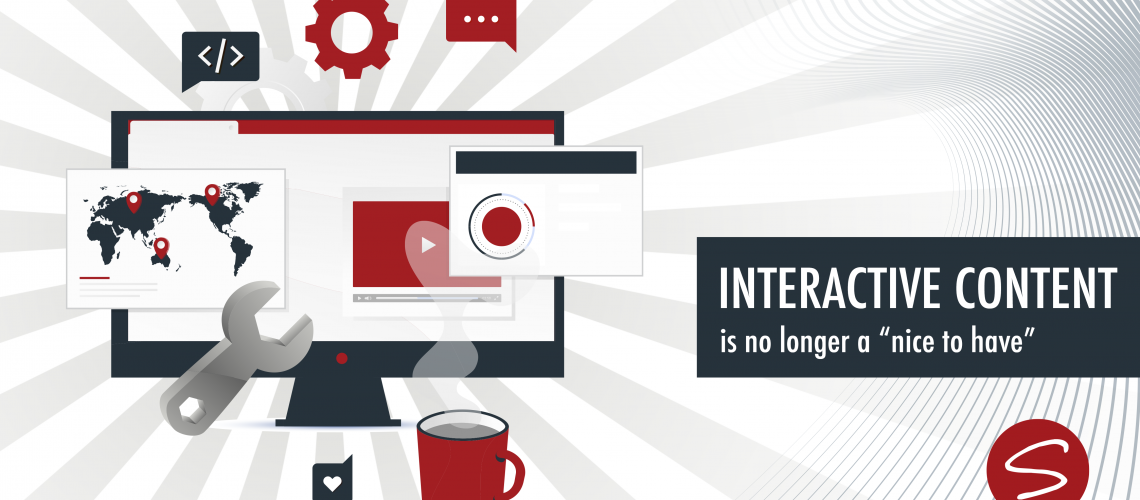It’s trends time again in digital land and if you’ve been paying attention, most analysts agree it’s going to be the year of interactive content.
But what does that even mean? And how do we go about ensuring our users are enjoying truly interactive experiences with our platforms and content?
First, let’s define interactive content. I found this to be about as accurate a description as possible: “Content that requires the participants’ active engagement – more than simply reading or watching. In return for that engagement, participants receive real-time, hyper-relevant results they care about.” – SnapApp
This definition screams gamification. Humans love unexpected rewards and are naturally explorative. We love games. We love being in control of our experiences. We love personal interactions and personal experiences.
But it’s more than just games, interactive content is basically a modern approach to digital.
If we consider the definition, and this psychology, we can start taking a stab at how to embed this line of thinking to drive our digital marketing in 2020:
- Play games, share your experiences
You can’t possibly hope to understand how to create decent interactive content without spending time learning from the greatest interactive innovation of our time – digital gaming. It’s a seriously big thing. Just ask the guys who won $25 million playing Dota 2 at The International last year.
But so many games are bad, frustrating, buggy, unrewarding, pointless and are often just not fun. This is both a serious risk and a serious opportunity for us. If we create an interactive experience, in whatever fashion, it should never do any of those things. In fact, our litmus test for the content becomes: is it fun, does it add value, does it work, and does it get our message across? If you aren’t supremely confident it ticks those boxes, it’s not worth the risk.
- Anything CAN and SHOULD (probably) have some element of interactivity
We need to care deeply about every button, every rollover effect and every other opportunity we have to make users go “mmmm, that was cool”. Experiences can and often are as rewarding and delightful to users as good information.
We can do so much with links. Think about how many more clicks you’d get if users got a kick out of pointing their mouse over them? Consider how much more time users would spend on your infographic if it had hidden animations and users could choose how they accessed the content.
- You can make any kind of media interactive
Video, blogs, polls, articles – these are all in the content mix but they’re usually very static, which they needn’t be. Blog articles, for example, can have hidden content sections or contextual content that users access by choice. Videos can be directed by the user. Think “What should the dog do now, chase the car or chase the cat?” Interactivity, at its heart, is about creating personal experiences that are driven by the user. We need to create these experiences with the tools at our disposal.
- Don’t overdo it
Firstly, this kind of content is not cheap. It takes time to build, much more time to test and relies on input from teams in your agency. It’s also hard to cost. Plan it out, design with it in mind and then execute in a way that ticks the boxes.
- Lastly, have fun
Start from the ground up and have these two things in mind: value drawn versus fun had. From the start, think about where and how you can add the most value to your audience, while they have as many wow moments as possible with your content.
I remain entirely convinced of this. So much so, that if you made it this far, I have a simple question for you: What is 100+100? Copy and paste the link below into your browser and then replace the word “answer” with your response using this domain www.stratitude.co.za/answer.
Article by Neil Bromehead, Digital Director at Stratitude

